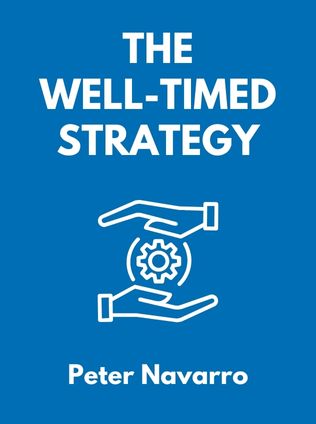
The Well-Timed Strategy
Managing the Business Cycle for Competitive Advantage
By Peter Navarro
Published 01/2006
About the Author
Peter Navarro is a renowned business professor at the University of California, Irvine. He is also the author of the bestselling investment book If It's Raining in Brazil, Buy Starbucks. Navarro’s work has been featured in prominent publications such as BusinessWeek, the Los Angeles Times, the New York Times, the Wall Street Journal, and the Harvard Business Review. With extensive expertise in economics and business cycles, Navarro offers invaluable insights into strategically managing business cycles for competitive advantage.
Main Idea
The primary focus of Navarro's The Well-Timed Strategy: Managing the Business Cycle for Competitive Advantage is to provide a comprehensive guide for executives to navigate the complexities of the business cycle. The book delves into how companies can strategically and tactically manage through various phases of the business cycle, leveraging economic indicators, and aligning business operations to optimize performance during both expansions and recessions. Navarro emphasizes the importance of timing in all aspects of business management, from marketing and production to human resources and risk management, to ensure sustained profitability and competitive advantage.
Table of Contents
- Introduction
- Strategies and Tactics of the Master Cyclist Executive
- The Master Cyclist Management Wheel
- Strategically Timing Acquisitions and Divestitures
- The Art of Cherry Picking and Other Well-Timed Tactics of the Human Resources Manager
- Macromanaging Production, Inventory, and Supply Chain
- Marketing Through Business Cycle Seasons
- Pricing the Cycle and Managing Credit and Receivables
- Proactive Profiting from Oil Price Spikes, Interest Rate Hikes, and Exchange Rate Risks
- Hedging the Many Faces of Exchange Rate Risk
- Surviving and Prospering from Economic Shocks
- The Master Cyclist’s Favorite Forecasting Tools
Introduction
Navarro begins by highlighting the inevitability of the business cycle, which moves from periods of expansion and prosperity to recessions and back again. The impact of these cycles on businesses and their employees is profound, influencing corporate profitability and stock performance. By analyzing hundreds of companies, from giants like DuPont to niche players like Isis, Navarro aims to uncover strategies that allow executive teams to manage through the different phases of the business cycle to gain a competitive edge.
"The fortunes of most companies literally ebb and flow with the business cycle, and the failure to manage these cycles effectively can lead to bankruptcy." - Peter Navarro
Strategies and Tactics of the Master Cyclist Executive
Timing is crucial in both love and war, and equally so in managing the business cycle. Navarro contrasts a "Master Cyclist" CEO, who anticipates economic downturns and implements well-timed strategies, with a "Reactive Cyclist" CEO, who reacts too late to economic indicators. The success of Johnson & Johnson's Ralph Larsen, who effectively anticipated a recession, is contrasted with Cisco's John Chambers, whose failure to read economic signs led to massive layoffs and inventory write-offs.
Sign up for FREE and get access to 1,400+ books summaries.
You May Also Like
Rich Dad Poor Dad
What the Rich Teach Their Kids About Money - That the Poor and Middle Class Do Not!
By Robert T. KiyosakiFreakonomics
A Rogue Economist Explores the Hidden Side of Everything
By Steven D. Levitt and Stephen J. DubnerThe Lean Startup
How Today's Entrepreneurs Use Continuous Innovation to Create Radically Successful Businesses
By Eric RiesWho Moved My Cheese?
An Amazing Way to Deal with Change in Your Work and in Your Life
By Spencer Johnson, M.D.Factfulness
Ten Reasons We're Wrong About the World – and Why Things Are Better Than You Think
By Hans RoslingMake Your Bed
Little Things That Can Change Your Life...And Maybe the World
By William H. McRaven



















